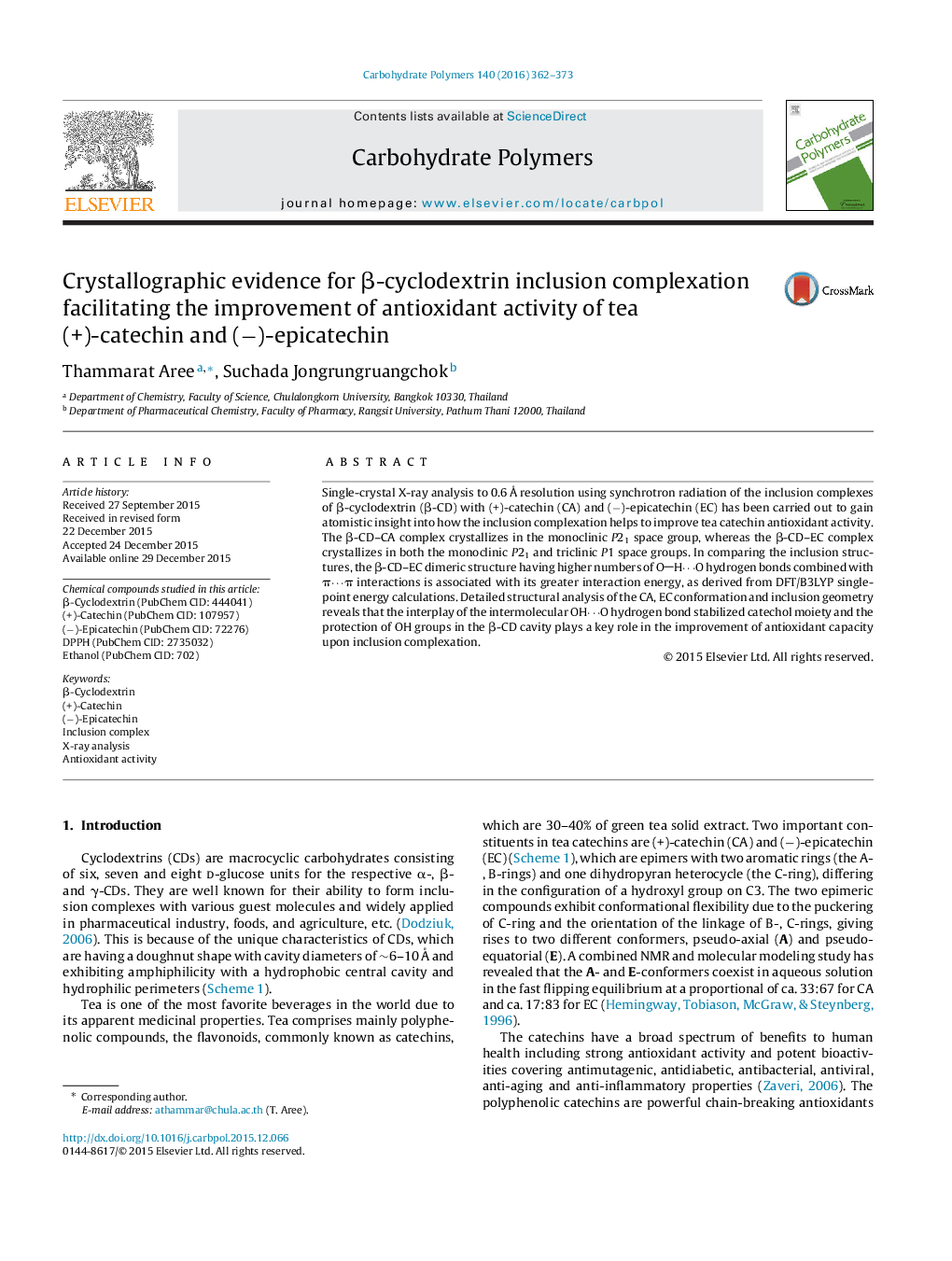| کد مقاله | کد نشریه | سال انتشار | مقاله انگلیسی | نسخه تمام متن |
|---|---|---|---|---|
| 1383471 | 1500618 | 2016 | 12 صفحه PDF | دانلود رایگان |

• X-ray analysis of β-CD inclusion complexes with (+)-catechin and (−)-epicatechin.
• Two complexes exist in three crystal forms, monoclinic, P21 and triclinic, P1.
• OH⋯O H-bonds and π⋯π intermolecular interactions stabilize the complexes.
• Rare A-conformer and dimeric structure of tea catechins in the cavity confinement.
• Number of OH groups protected play a key role in antioxidant activity improvement.
Single-crystal X-ray analysis to 0.6 Å resolution using synchrotron radiation of the inclusion complexes of β-cyclodextrin (β-CD) with (+)-catechin (CA) and (−)-epicatechin (EC) has been carried out to gain atomistic insight into how the inclusion complexation helps to improve tea catechin antioxidant activity. The β-CD–CA complex crystallizes in the monoclinic P21 space group, whereas the β-CD–EC complex crystallizes in both the monoclinic P21 and triclinic P1 space groups. In comparing the inclusion structures, the β-CD–EC dimeric structure having higher numbers of OH⋯O hydrogen bonds combined with π⋯π interactions is associated with its greater interaction energy, as derived from DFT/B3LYP single-point energy calculations. Detailed structural analysis of the CA, EC conformation and inclusion geometry reveals that the interplay of the intermolecular OH⋯O hydrogen bond stabilized catechol moiety and the protection of OH groups in the β-CD cavity plays a key role in the improvement of antioxidant capacity upon inclusion complexation.
Figure optionsDownload as PowerPoint slide
Journal: Carbohydrate Polymers - Volume 140, 20 April 2016, Pages 362–373